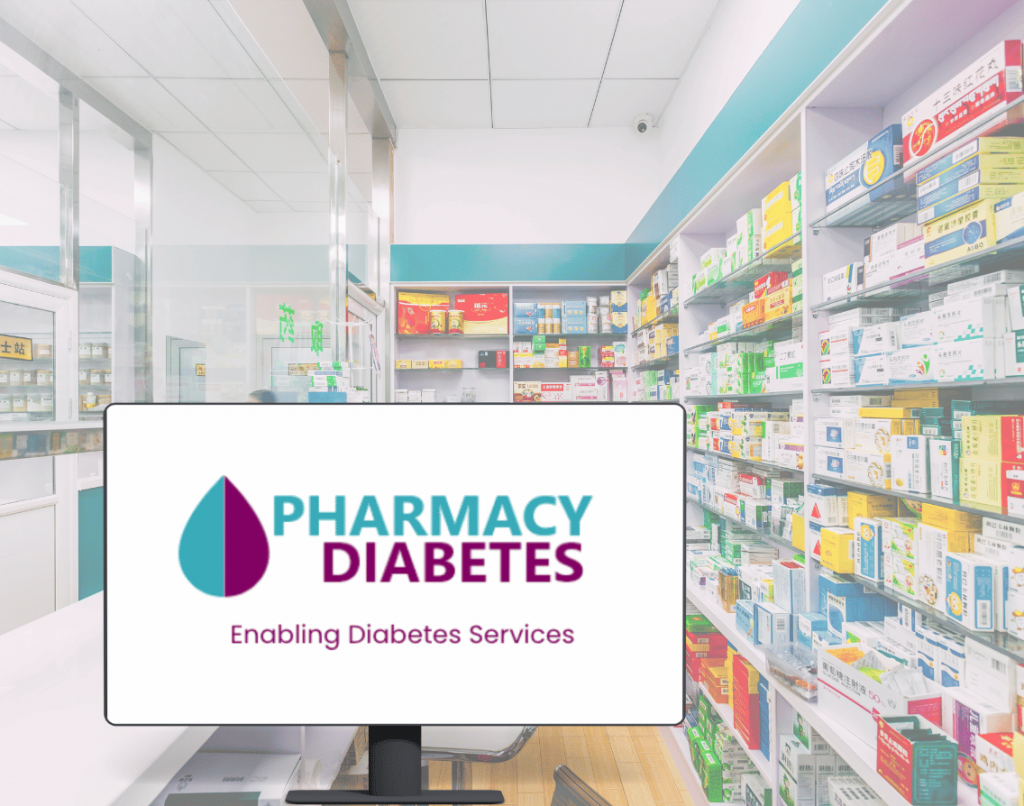Pharmacy Diabetes
Empowering Pharmacies, Transforming Lives
Enabling Diabetes Services

PharmacyDiabetes is a digital platform designed by pharmacists, diabetes educators, dietitians, and tech experts. It helps pharmacists enhance in-store diabetes care, working within their professional scope and as part of a multidisciplinary team. Our mission is to enable pharmacies to boost their services, unlock new revenue, and expand retail categories while providing top-notch support to people living with diabetes.
Simplifying Diabetes Care Delivery

Bridging The Gap
PharmacyDiabetes bridges the gap between pharmacy training programs and real-world application. Each section pairs its training program with a step-by-step digital guide, facilitating practical in-store implementation. This guide ensures that the skills gained through training are seamlessly applied in practice.
Diabetes Health Destination
People with diabetes consult a pharmacist more often than any other healthcare professional. This frequent interaction offers a unique opportunity to support these individuals in managing their diabetes.
For each medicine class, PharmacyDiabetes provides a clear screen explaining the intervention, which the pharmacist can complete within their scope of practice. It seeks to assist the people with type 2 diabetes in understanding their diabetes medicines, improve their utilisation of self-monitoring devices and improve blood glucose parameters, thereby reducing the risk of developing complications associated with diabetes.

Diabetes Annual Cycle of Care
Create a checklist and reminder service for reviewing a person’s diabetes management and general health annually. Regular checks are crucial as diabetes can lead to health consequences affecting the whole body, including the kidneys, eyes, feet, nerves, and heart. This feature helps manage diabetes more effectively and reduce the risk of diabetes-related complications.
A pharmacist-led program using the Very Low Energy Diets (VLED) available in the pharmacy and other diet and lifestyle modifications to make type 2 diabetes remission and prevention possible. It facilitates face-to-face interactions with pharmacists, sessions with Accredited Practising Dietitians and Credentialled Diabetes Educators, and communication with General Practitioners

Building Confidence And Competence
1. Practical Implementation Guidance: Detailed, step-by-step programs equip your team with the knowledge and skills to confidently deliver diabetes care services.
2. Customizable Service Delivery: Our model respects the unique capabilities and comfort levels of your team, offering flexibility in the services you choose to deliver.
3. Accessible Tools & Resources: An extensive collection of online tools and resources supports effective service delivery, ensuring you have everything you need at your fingertips.

Transforming Patient Care
With Pharmacy Diabetes, you’re not just offering services; you’re significantly improving the lives of those living with diabetes by:
1 .Delivering Personalised Care: Our health care service approach ensures that each individual’s care journey is tailored to their specific needs, leading to better health outcomes.
2. Supporting Your Community: By providing comprehensive diabetes health care services, your pharmacy becomes a key player in addressing the diabetes epidemic at the community level.
The Impact Of Your Commitment
People with diabetes see their pharmacist 7-14 times more than other healthcare professionals. This puts the pharmacist in a unique position to provide support to these individuals and help them with their annual cycle of care.
“As medicines experts, pharmacists play a crucial role in assisting people with diabetes. They help patients understand their diabetes medications, support self-monitoring, and manage blood glucose levels, ultimately reducing the risk of diabetes-related complications” Kirrily Chambers, CDE Pharmacist

Join Us In Making A Difference
Commencing on this journey with Pharmacy Diabetes means setting your pharmacy apart as a leader in healthcare innovation and community support. It’s an opportunity to not only grow your business but to make a tangible difference in the health and lives of your customers.
Ready To Transform
Diabetes Care?
Book a Live demo to learn how your pharmacy can become a pivotal diabetes health hub, maximising the power of technology to deliver unparalleled care and support to those living with diabetes.
Get started for FREE.
Together, we can redefine what it means to provide healthcare, one patient at a time.
Pharmacy Diabetes means here innovation meets compassion, transforming the future of diabetes



